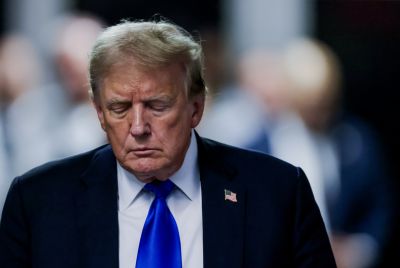Treasury soon to offer details on toxic-asset plan
The Treasury will offer more details in the coming week about how proposed public-private partnerships to take bad assets off banks' books will work, a senior department official said on Saturday.
The proposal for such partnerships was first made by Treasury Secretary Timothy Geithner in February but the lack of detail about them at the time disappointed financial markets led to a sharp drop in stock prices.
Many analysts say the problem of toxic assets -- particularly mortgages gone bad as a result of the U.S. housing bust -- is at the heart of banks' reluctance to lend and must be dealt with before credit markets can operate normally again.
The Treasury official told reporters it wants to put out enough information in the coming week so that potential participants can better judge the proposal and it wants to indicate the timeframe within which it is expected to become operational.
Geithner, who was in southern England to meet finance ministers from Group of 20 nations, had indicated that something was likely soon but gave no details.
The Treasury official who spoke to reporters later said that enough information will be provided so that people can see that market mechanisms can be brought to bear on the issue.
The public-private partnerships could be a device for attracting investors to buy troubled assets at some discount in hope of future profit, offering financing support from the government for those that are willing to buy the assets.
Treasury officials have suggested the public-private investment fund, or funds, would be a vehicle for putting government capital alongside private capital to buy $500 billion to $1 trillion in assets weighing down bank balance sheet.
INVESTORS DISAPPOINTED
At the time the proposal first was announced on February 10, the scant detail and lack of a clear time frame for removing the toxic assets disappointed investors, who sent bank shares sharply lower, helping to trigger new government rescues for Citigroup and American International Group.
Since then, officials have provided bits and pieces of the plan, which is expected to involve multiple investment funds. Geithner said in testimony last week that the initiative would leverage both public and private capital to buy assets using government financing.
We think that to be effective in this context we need to commit to do something in the range of financing available in the order of $1 trillion...that would be the amount of financing we have to mobilize in this context, he told the U.S. Senate Budget Committee on Thursday.
He said the plan could get started using the remaining funds in the Treasury's $700 billion financial rescue fund, but this and other banking stability efforts may require the Treasury to request additional funds from Congress.
A placeholder provision in President Barack Obama's fiscal 2010 budget plan signals a possible request of around $750 billion in new funds.
Neel Kashkari, the Treasury's interim administrator for the $700 billion rescue fund, also told lawmakers this week that private investors are ready to invest in distressed mortgage assets if they can get financing. With no private financing available, they could only pay prices that are too low for banks to be willing to sell.
The bad asset plan is expected to be structured similar to the Federal Reserve's Term Asset-Backed Securities Loan Facility (TALF), which is scheduled to launch this week to help unblock consumer lending markets.
In it, investors are able to borrow funds from the Fed against highly rated asset-backed securities, which then can be used to invest in new securities, helping to jumpstart consumer credit.
(additional reporting by David Lawder)
© Copyright Thomson Reuters 2024. All rights reserved.





















